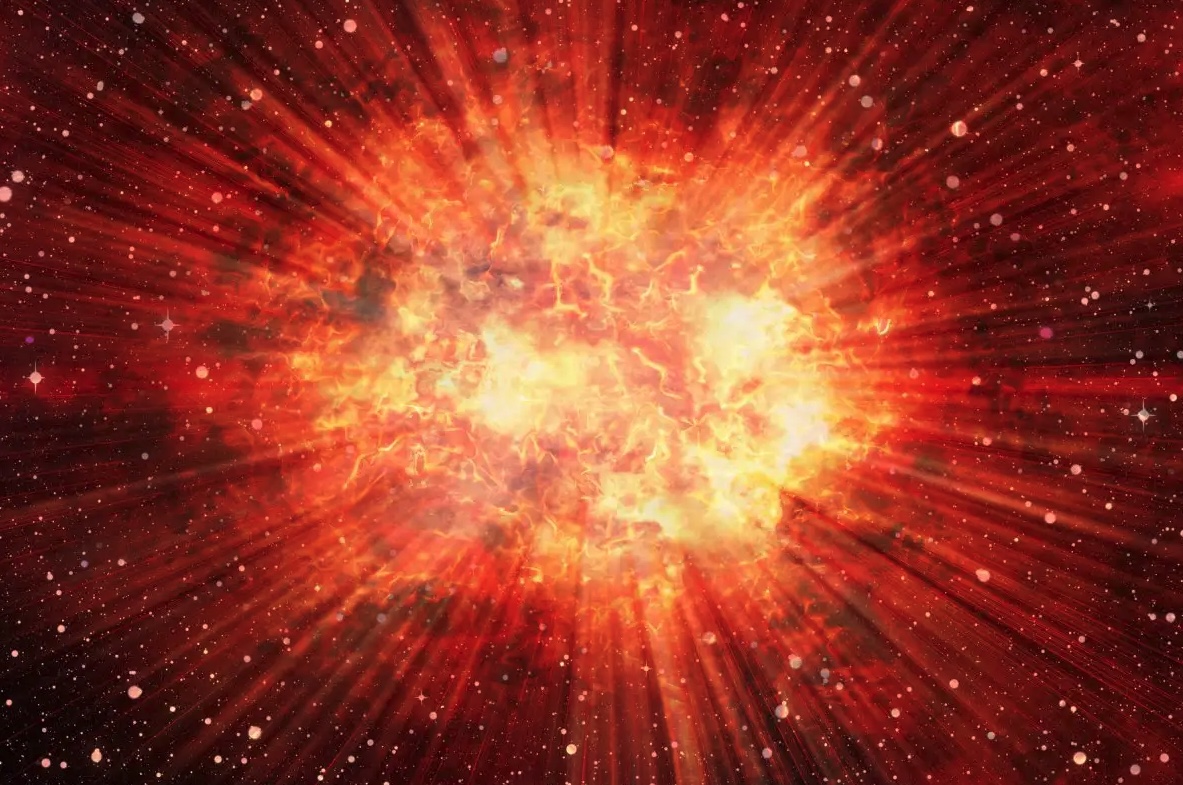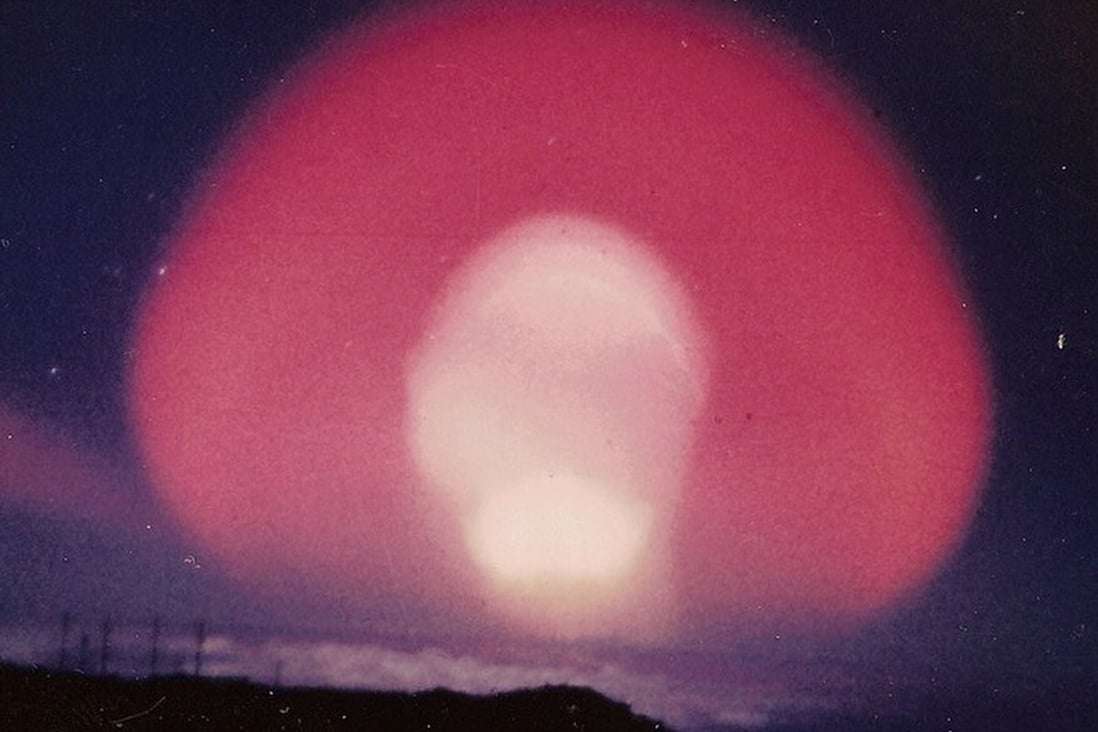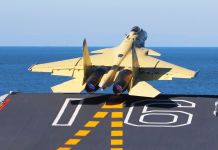In simulation drills, Chinese military scientists used a nuclear anti-satellite weapon to destroy satellites in near-Earth orbits, like the Starlink satellites belonging to Elon Musk’s SpaceX, per the latest report by the South China Morning Post (SCMP).
The scientists concluded that a nuclear blast in near space could form a radioactive cloud over an area as big as New York state that can cripple or destroy satellites in near-Earth orbit.
Researchers at the Northwest Institute of Nuclear Technology in Xian, run by the People’s Liberation Army (PLA), claimed to have developed a model to estimate the range and scale of damage a nuclear anti-satellite weapon can cause at different altitudes and yields.
The findings by the researchers suggest that a 10-megaton warhead could create a severe threat to satellites if detonated at an altitude of 80 kilometers.

Such a nuclear blast is expected to turn air molecules into radioactive particles and produce a cloud with a shape similar to an upside-down pear, said nuclear physicist Liu Li and his colleagues in a paper published in the peer-reviewed journal Nuclear Techniques on October 15.
In five minutes, this cloud could rise to an altitude of nearly 500 kilometers and expand over an area exceeding 140,000 square kilometers.
“The strong residual radiation of the debris cloud may cause failures of spacecraft moving in it, such as satellites, or even cause direct damage that can lead to destruction,” the researchers said.
A Nuclear Detonation In Near Space Could Set A Trap For Enemy Satellites
Liu’s team noted that there had been many computer simulations before that have studied the use of nuclear anti-satellite weapons in space. However, a nuclear detonation in space would not produce much of a cloud due to the absence of air.
According to Liu and his colleagues, the high-energy particles generated by the event would largely be captured by the Earth’s magnetic field and form a radiation belt around the globe, threatening a wide range of spacecraft, rendering nuclear weapons ineffective and very hazardous for anti-satellite purposes.
However, a detonation in near space would result in cloud formation because of the presence of air molecules. According to Liu, the cloud formed will be far greater in mass than the bomb itself.
“Due to the high concentration of fission products inside the debris cloud, the released gamma rays and beta particles are strong, making their effect on spacecraft and communications within the affected area stronger,” Liu’s team wrote.
Researchers describe that instantly after the explosion, the cloud would rise upward at a speed of up to 2.3 kilometers per second, setting a trap for target satellites.
Also, the air molecules, instead of remaining in orbit, would fall back to Earth, unlike in the case of a space-based explosion, thereby avoiding the radiation belt effect and significantly reducing the risk to other satellites or spacecraft.
China Could Use Nuclear Anti-Satellite Weapons Against Starlink Satellites
Such a nuclear anti-satellite weapon would allow the PLA to cripple or destroy Starlink satellites positioned in Low-Earth Orbit (LEO), which has long been a concern for Chinese military planners.
In May, the official newspaper of the Chinese armed forces raised concerns about the risks associated with the Starlink satellite internet system, suggesting the US military could use it to dominate outer space.

“SpaceX has decided to increase the number of Starlink satellites from 12,000 to 42,000 – the program’s unchecked expansion and the company’s ambition to use it for military purposes should put the international community on high alert,” said the article on China Military Online, the official news website affiliated with the Central Military Commission (CMC), China’s highest national defense organization headed by President Xi Jinping.
The article also noted SpaceX Starlink’s role during the Russia-Ukraine war, where Elon Musk provided Starlink terminals to restore communications in those parts of the country where internet or phone connection had stopped following the shelling by Russian troops.
“In addition to supporting communication, Starlink, as experts estimated, could interact with UAVs [Unmanned Aerial Vehicles] and, using big data and facial recognition technology, might have already played a part in Ukraine’s military operations against Russia,” said the China Military Online article.
The China Military Online commentary also listed numerous instances since 2019 when Starlink cooperated with the US military, including the successful data transmission test conducted by the US Air Force (USAF) on March 31.
.@HillAFBUtah’s Operations Support Squadron cyber Airmen are currently exploring high-speed communications options to support F-35A Lightning II Agile Combat Employment – operating from remote or austere locations.https://t.co/kL3MQPvcDm
@USAF_ACC pic.twitter.com/1rrDcr0aJh
— U.S. Air Force (@usairforce) April 4, 2022
The tests evaluated and explored high-speed communications supporting F-35A’s operations in remote or austere locations. The USAF stated they witnessed connection speeds about 30 times faster than the current military satellite systems.
Citing unnamed military experts, the China Military Online article also raised a possibility that Starlink could form a second and independent internet that threatened states’ cyberspace sovereignty.
Another Chinese military study published in May called for the development of capabilities to disable or bring down the Starlink communication network, highlighting the potential threats posed by the network to China’s national security.

Since conventional counter-measures like anti-satellite missiles could only neutralize a limited number of high-value targets, and the loss of a few low-cost satellites would not have much impact on Starlink’s operations, Chinese military researchers have therefore been proposing to strike a few selected targets that could create a small amount of space debris.
The space debris would also hit other satellites in the same orbit and create more debris, creating a gap in the Starlink network. However, the debris could also hit friendly satellites.
The Simulation Could Also Be Applied For Defense Against Hypersonic Weapons
A Beijing-based space scientist has said that the simulation of a nuclear detonation in near space does not necessarily mean that China will use such a weapon against satellites.
“International law has banned the testing or use of nuclear weapons in both space and the atmosphere,” the researcher told the SCMP on condition of anonymity because of the issue’s sensitivity.
Instead, the researcher suggested that the simulation could also be applied for defense against hypersonic weapons designed to travel long distances at near-space altitudes.
“Whether it is legal to use nuclear weapons as a defense measure against a hypersonic weapon attack remains a subject of debate in the research community,” the researcher said.
Notably, China has not tested a nuclear weapon in near space. The US did detonate a 3.8-megaton nuclear bomb at an altitude of 77 kilometers over the Johnston Atoll west of Hawaii as part of an exoatmospheric high altitude nuclear weapon test called the ‘HARDTACK-Teak’ test.

The blast from this nuclear detonation is said to have created a fireball that turned from light yellow to red, and a massive cloud was formed from the explosion that remained visible for about half an hour.
Liu’s team said that the results obtained from their simulation matched those of the HARDTACK-Teak, which reportedly produced a cloud that spread over an area exceeding 700 kilometers.
The US also conducted a high-altitude nuclear test called the ‘Starfish Prime’ in 1962, the largest nuclear test conducted in outer space.
The test was carried out using a Thor rocket carrying a W49 thermonuclear warhead. The detonation occurred 400 kilometers above a point southwest of Johnston Atoll and had a yield of 1.4-megaton.
- Contact the author at tanmaykadam700@gmail.com
- Follow EurAsian Times on Google News




